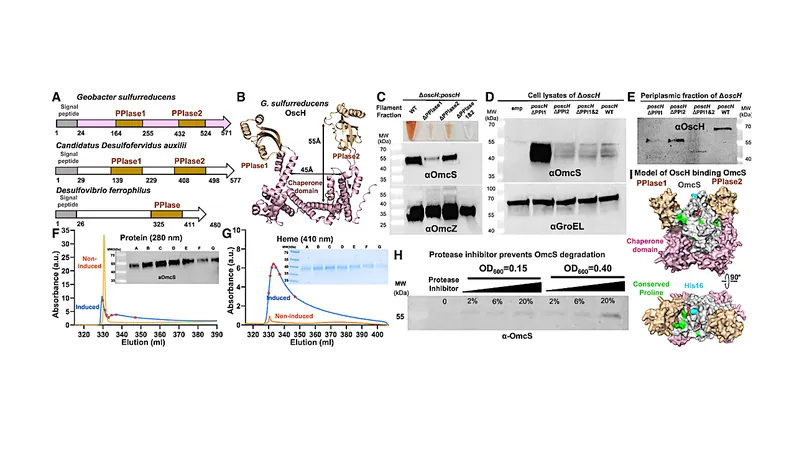
Breakthrough in Bacterial Nanowire Research Could Transform Clean Energy Solutions!
2025-01-26
Author: Li
Introduction
In an astounding discovery that could reshape our understanding of microbial energy production, researchers at Yale University have unveiled the intricate machinery responsible for assembling bacterial nanowires. These microscopic filaments are pivotal for certain bacteria—specifically those living in oxygen-deprived environments, such as deep soils and ocean floors—to effectively expel electrons.
Microbial Solutions to Energy Challenges
While most life forms rely on oxygen to manage energy conversion waste, many microbes, which play a critical role in combating pollution and climate change, have evolved unique solutions. Instead of oxygen, these bacteria utilize minerals from their surroundings to 'breathe,' enabling them to thrive where others can't.
The Role of Heme Molecules
Under the guidance of Nikhil Malvankar, Associate Professor at Yale's Microbial Sciences Institute, earlier studies revealed that bacterial nanowires are constructed from chains of heme molecules, akin to the hemoglobin that transports oxygen in our blood. However, understanding how these nanowires are assembled has remained elusive—until now.
New Findings on Nanowire Assembly
The recent findings spearheaded by Cong Shen and his team detail the assembly mechanisms of these nanowires. Out of a total of 111 identified heme proteins, only three have the ability to polymerize into nanowires. The team not only pinpointed the assembly machinery but also discovered that modifying certain components of this machinery can enhance both nanowire production and bacterial growth rates, unlocking new potentials for practical applications.
Implications for Clean Energy
This breakthrough is pivotal for future innovations in bioenergy, where engineered bacteria could potentially generate electricity efficiently, significantly clean water supplies, and help reduce atmospheric methane—a potent greenhouse gas.
Conclusion
The research, recently published in the journal *Cell Chemical Biology*, includes contributions from various lab members and collaborators and underscores the importance of these microscopic structures in environmental sustainability efforts. In light of this discovery, researchers are now more optimistic than ever about the possibility of harnessing bacterial nanowires for eco-friendly technologies that could pave the way for a cleaner, more sustainable future. Stay tuned—this exciting development may lead to revolutionary changes in how we think about energy production!



 Brasil (PT)
Brasil (PT)
 Canada (EN)
Canada (EN)
 Chile (ES)
Chile (ES)
 Česko (CS)
Česko (CS)
 대한민국 (KO)
대한민국 (KO)
 España (ES)
España (ES)
 France (FR)
France (FR)
 Hong Kong (EN)
Hong Kong (EN)
 Italia (IT)
Italia (IT)
 日本 (JA)
日本 (JA)
 Magyarország (HU)
Magyarország (HU)
 Norge (NO)
Norge (NO)
 Polska (PL)
Polska (PL)
 Schweiz (DE)
Schweiz (DE)
 Singapore (EN)
Singapore (EN)
 Sverige (SV)
Sverige (SV)
 Suomi (FI)
Suomi (FI)
 Türkiye (TR)
Türkiye (TR)
 الإمارات العربية المتحدة (AR)
الإمارات العربية المتحدة (AR)